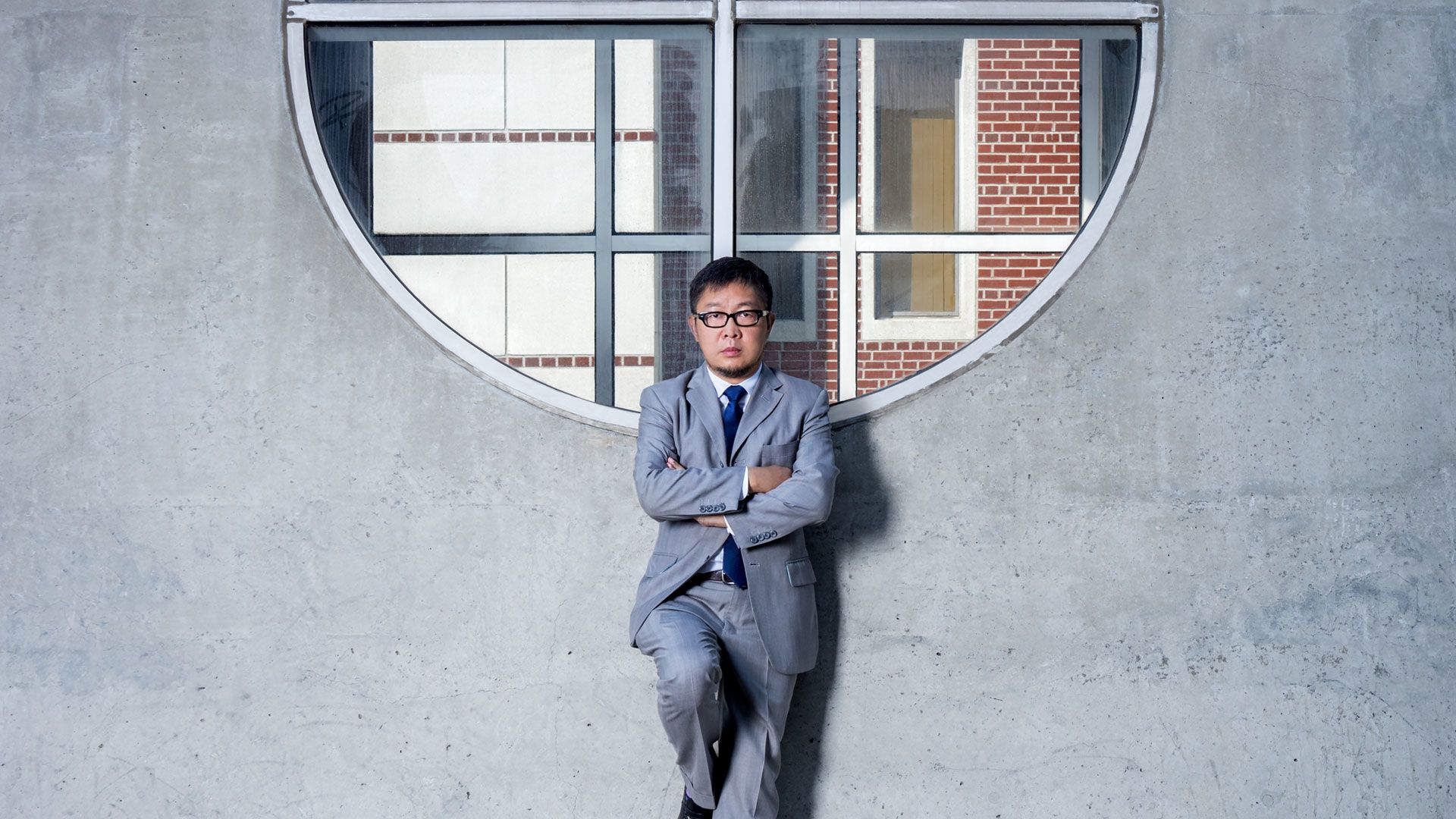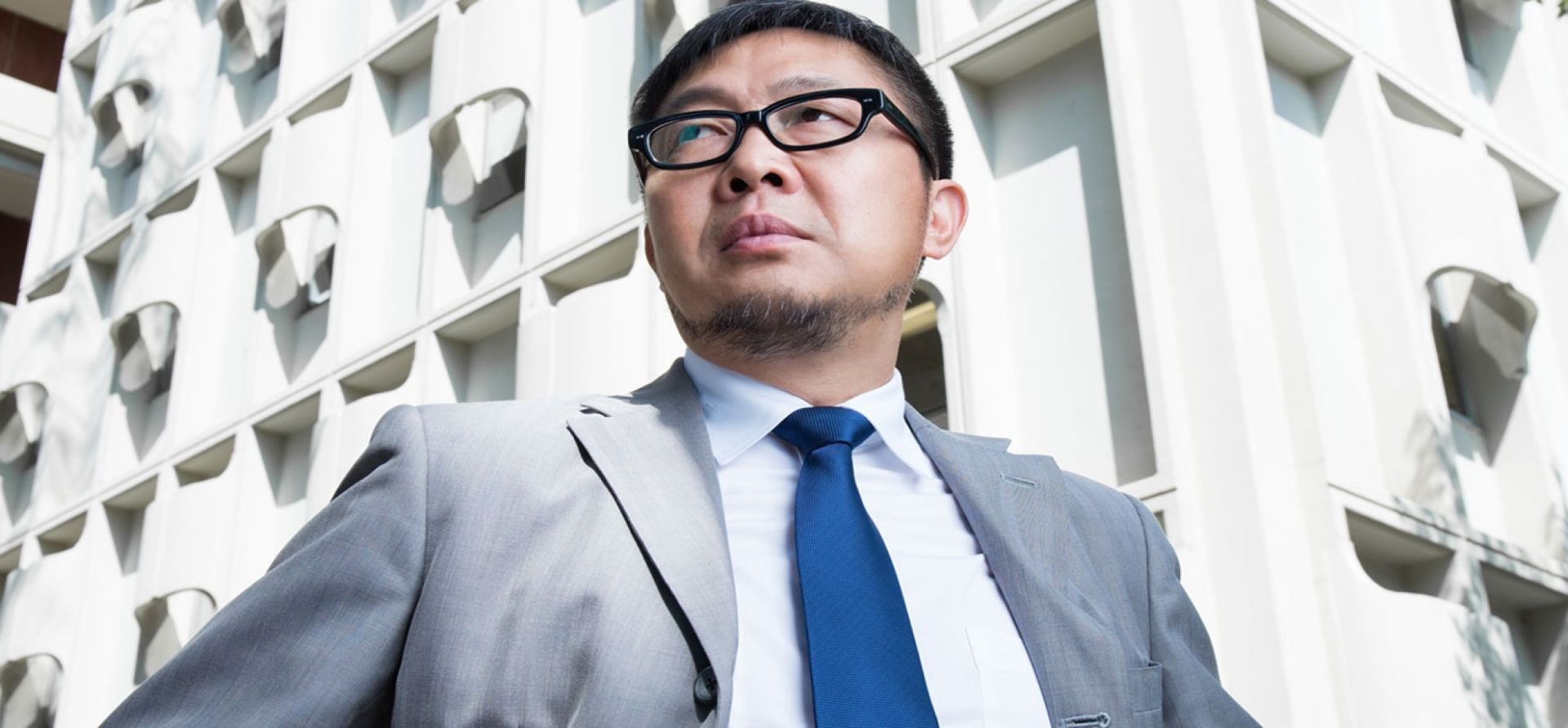With its vast and varied topography, California has long provided abundant opportunities and inspiration for generations of architects. From the ornate beaux arts designs of Julia Morgan to the sculptural, postmodern wonders of Frank Gehry, some of the world’s greatest architectural talents have made their mark on California’s urban landscapes. And many of those architects, like Paul Revere Williams, Gregory Ain, Peter Koenig, Jon Jerde and Pritzker laureate Thom Mayne, were trained by the USC School of Architecture.
Since 2006 that impressive legacy has rested, with surprising lightness, on the shoulders of Qingyun Ma, the dean of the prestigious School of Architecture. Born in Xi’an in the Shaanxi province of China and educated there as well as the University of Pennsylvania, his cosmopolitan vision of art, architecture and culture and the many ways they intersect make him an effective and dynamic leader of an institution that trains the men and women who will design and define the cities of the future.
Ma’s architectural vision is infused with a passion for creativity in all its forms. He founded his own design firm, MADA s.p.a.m., in Beijing in 1996, and his offices double as exhibition spaces for contemporary art. In 2007 he served as chief curator of the Shenzhen and Hong Kong Biennale, moving easily between the worlds of fine and functional art.
“There are two forces inside myself that led me to become an architect,” he reflects. “I am always thrilled by spaces; I’m not especially aware of materials, but I have always been fascinated by environments: streets, train stations. I am fascinated by the ways they affect people, how they respond to them, how they move through them. The other influence was my family. I come from a long line of tailors. My father is a great tailor, and some of my earliest memories are watching him measuring material, drawing lines on fabric. Clothing is our first layer of architecture; it requires form, precise measurements, carefully selected material, symmetry.”
Another early influence on Ma’s aesthetic was a medieval icon that loomed over his hometown.
“I come from Xi’an, an ancient capital of the Shaanxi province,” he explains. “One of its best-known landmarks is an intact Ming Dynasty wall. It is impactful, enormous, but simple. Everything about it is practical; the windows functioned as arrow slits. It is elegant, not brutal. That is what I am always trying to achieve in my own design work: I want it to have scale and significance, without being oppressive. When I go back to Xi’an, I still look at that wall and try to analyze what is so special about it.”
For this reason, Qingyun Ma prefers to work on large-scale, public projects, like his collaboration with Rem Koolhaas on the Shenzhen stock exchange and the CCTV building in Beijing. “I design weird buildings because that’s what I believe I am good at,” the architect says modestly. “I also love classical architecture, when it’s well done.”
Modernism came late to China. By the time it became part of the intellectual discussion there, it was being filtered through the lens of postmodernism. “The big influences were Michael Graves and Robert Ventura,” says Ma. “They were driving and defining the discourses when I was in school.”
Seeking his own tutelary spirit, however, Ma was drawn to the work of Modernist master Oscar Niemeyer, behind one of the 20th century’s most ambitious and daunting civic design projects: the city of Brasilia, the federal capital of Brazil. Built in 1956, the new city was conceived to move the seat of power away from Rio de Janeiro and centralize Brazil’s government, and in the process create a vibrant, evolving work of inhabited art that is now recognized as an UNESCO World Heritage Site, a work of singular artistic achievement and an experiment in human genius, according to the UN’s website. It’s the kind of fearless, bravura artistry Ma admires.
 “He was a hero when I was in my college years,” Ma recalls. “His work is enormous in scale, sensitive in the choice of materials, provocative in its geometry—much like the Ming wall! Its architecture and representation of the human spirit go beyond cultural specificities. That’s what I am trying to convey as an educator.”
“He was a hero when I was in my college years,” Ma recalls. “His work is enormous in scale, sensitive in the choice of materials, provocative in its geometry—much like the Ming wall! Its architecture and representation of the human spirit go beyond cultural specificities. That’s what I am trying to convey as an educator.”
USC attracts students from all over the world, determined to take advantage of its prestigious programs, but they also bring with them a wide variety of perspectives, knowledge and aesthetics that enrich both the program and their fellow students. Ma sees this as one of the greatest strengths of both the architecture school and the entire state of California.
“Our program at USC has always been global,” he says proudly. “Because we’re on the West Coast, it’s on the frontier of American culture, and it’s also on the frontier of the rest of the Pacific Rim,” he says. “I’m a dean from the other side of the ocean. I bring the perfect blend of educational background from both China and the West. My students will practice all over the world. They will return to their respective cultures and re-circulate ideas that they learned and shared at USC.”
This free-flowing exchange of ideas and theories across cultures and borders is altering the nature of city planning, as well as our understanding of the role architecture and design around the world. The language of architecture is becoming universal, rather than local, regional or nationalistic.
‘In the postmodern culture, especially entering the 21st century, the vernacular has taken on a new meaning,” the dean explains. “It is now associated with the personal styles of individual architects who do projects all around the world: Zaha Hadid, Frank Gehry, Rem Koolhaas. They are creating buildings that are instantly recognizable as their own and taking the place of specific locales as the visual definition of a city.”
He points to LA’s Walt Disney Concert Hall as a prime example of an architect’s vision sculpting and defining a city’s image and identity. “It seems so … wrong,” Ma says playfully. “There are none of the clichés of urbanism or contexturalism involved in the design. It would look better out in the middle of nowhere, like Victorville or at the end of the Santa Monica Pier—surrounded by empty fields or water. The beauty and power of the Disney Hall makes all the buildings around it obsolete. Everything surrounding it looks banal in comparison. Even the new Broad Museum, which is barely completed, looks old in comparison.”
Los Angeles is a city that is never finished. It’s still in flux, still inventing itself. You can experiment here; it’s very tolerant of diversity.
He has less kind words for Rafael Moneo’s Cathedral of Our Lady of the Angels. “It looks forced and artificial to me,” says Ma. “I like the interior much more than the façade though. I think it’s a wonderful theatre.”
Ma lives in Pasadena. It was no easy task for one of the world’s most experimental architects to find a place to call home. “I hated everything I saw,” he announces. “The Realtor was showing me houses in San Marino and Pasadena, and so much of the design was mediocre. The beautiful setting against the San Gabriel Mountains and wonderful landscaping distracts from the architecture. There are some great houses by Greene & Greene, Buff & Hensman—even Frank Lloyd Wright—but most of the houses that don’t have those names on them are nothing special. I finally found a house that was falling down, half-finished. That interested me, and I was able to renovate it to my own taste and create a home that really suits me.”
Comfortably ensconced in his Pasadena digs, Qingyun Ma has explored both the physical and cultural landscape of Southern California. Fascinated by contemporary art, he is a partner in Gallery ALL in Downtown Los Angeles and Beijing, which presents functional art and design by Chinese artists. He is energized by the endless possibilities that California offers for creative expression.
“Los Angeles is a city that is never finished,” he muses. “It’s still in flux, still inventing itself. You can experiment here; it’s very tolerant of diversity. Part of its creative strength is its horizontal sprawl. If a structure fails in one part of town, it doesn’t impact how the rest of the city is perceived. There is freedom in our isolation. Everybody with a creative mind can have a vision of their own and contribute it to the image of the city.”
Qingyun Ma is now exploring a completely different outlet for his restless creativity: the wine business. More significantly he is trying, almost single-handedly, to make China a major player on the global wine market.
He started his winery, Jade Valley Wines, almost 20 years ago while home in China, building a house for his father. “I was traveling back and forth between my dad’s village and Shaanxi,” Ma recalls. “I saw a similarity between that valley and the many wine-growing regions of the world. I thought, ‘Every wine country looks like this, and any landscape that looks like this should be wine country.’”
After years of patiently experimenting with viticulture, Qingyun Ma is convinced that Jade Valley now produces some of the best wines in China, and he is anxious to start importing them to the U.S. and the rest of the world.
All of his many interests and activities seem to circle back to his role as an educator. Whether he is introducing collectors to previously unfamiliar Chinese artists or tantalizing foodies with the promise of untasted vintages from distant terroir, Qingyun Ma revels in introducing new ideas and to passing along traditions. He says, “I love to tell my students, ‘Fifty years ago, Frank Gehry was sitting where you are now.’”
For more on Qingyun Ma’s Jade Valley Wines, visit jadevalley.com.cn.
Written by Lynn Morgan | Photographed by Kremer/Johnson

















